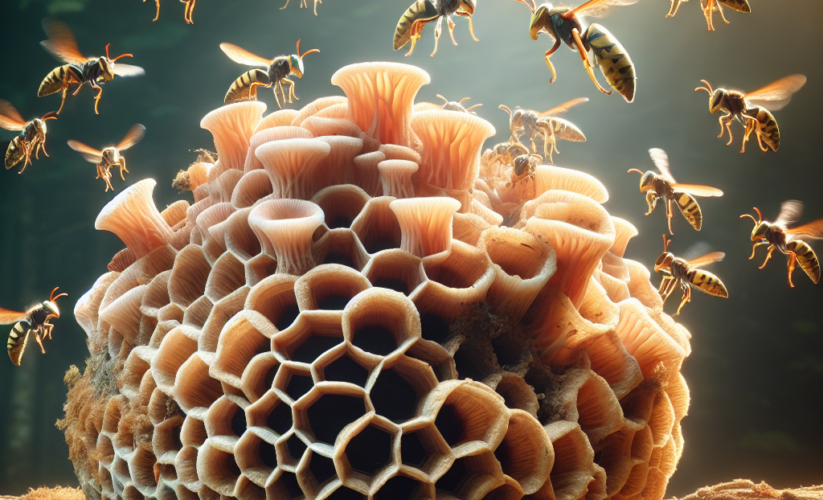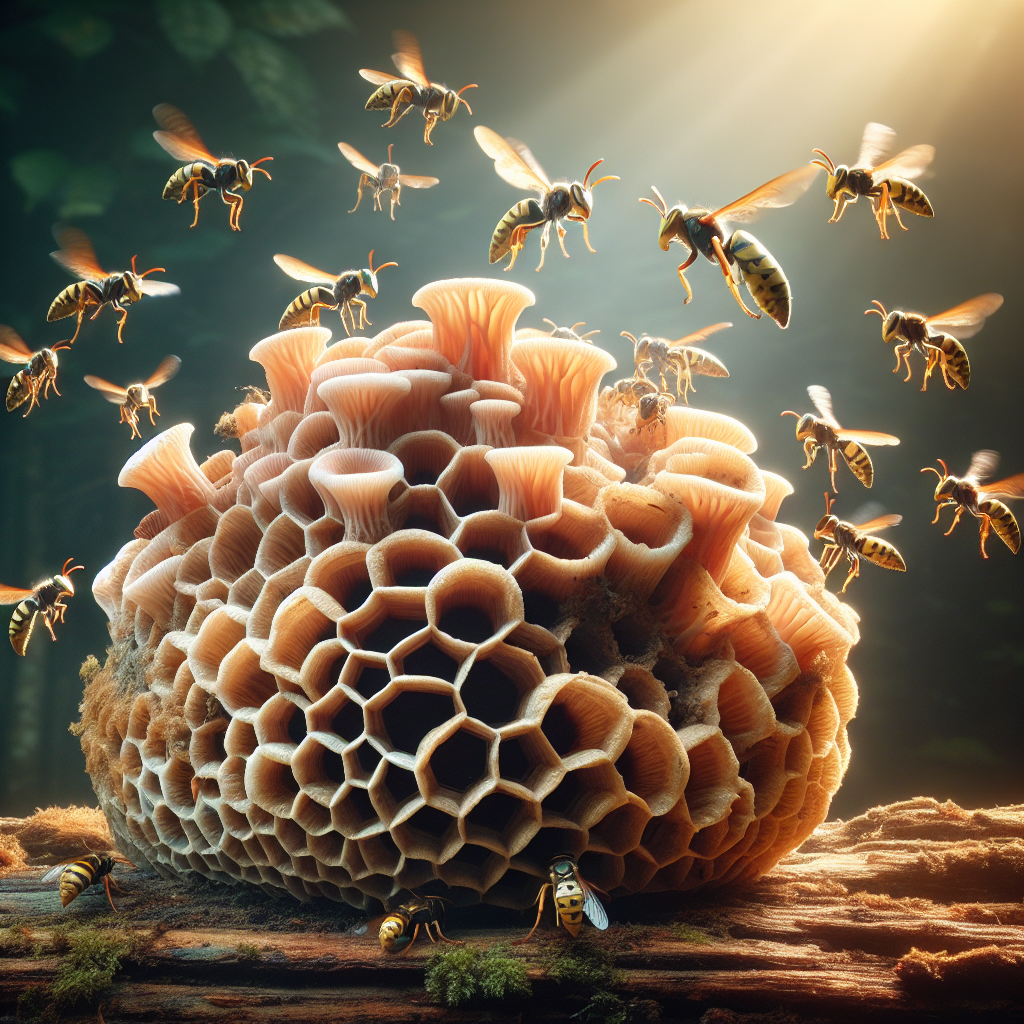
Hornissenschimmel: 7 Geheimnisse, die Sie wissen müssen!
Hornissenschimmel: Understanding the Fascinating World of Hornissenschimmel
What is Hornissenschimmel?
Hornissenschimmel, commonly known as hornet mold, refers to a unique type of mold associated with certain species of hornets. This mold can typically be found in areas where hornets build their nests, primarily in wood and other organic materials. The presence of **hornissenschimmel** can indicate the activity of hornets and can sometimes raise concerns for homeowners regarding property damage and safety. This article delves into the various aspects of hornissenschimmel, including its characteristics, potential impacts, and methods for management.
Characteristics of Hornissenschimmel
Hornissenschimmel is characterized by its fuzzy appearance and typically grows in humid environments where hornets nest. This mold often has a distinct coloration, ranging from greenish to grayish tones. The growth patterns of **hornissenschimmel** can vary, as they often follow the contours of the material they inhabit. A practical example of hornissenschimmel is its occurrence on wooden structures, where hornets have established their nests. Regular monitoring for any signs of this mold can help in early detection and management.

The Role of Hornets in Mold Growth
Understanding the relationship between hornets and **hornissenschimmel** is crucial. Hornets can contribute to mold growth through their nesting behaviors; as they chew wood to create their nests, they inevitably introduce moisture and organic matter conducive to mold proliferation. This symbiotic relationship serves as a natural process, where hornets utilize mold as part of their ecological niche, but it can pose risks to human habitats. Homeowners should be aware of this interplay to better manage their properties.
Potential Impacts of Hornissenschimmel
The presence of hornissenschimmel may lead to various consequences for homeowners and environments where hornets thrive. While some may consider **hornissenschimmel** a mere curiosity, it can result in structural damages over time if left unchecked. If hornets persistently infest an area and their mold grows, this can weaken wooden structures, potentially leading to costly repairs. Awareness of these impacts is essential for property owners, and proactive measures can help mitigate risks.
Health Concerns Associated with Hornissenschimmel
While hornissenschimmel itself is not directly harmful, the underlying conditions it indicates could pose health risks. For instance, mold spores can trigger allergic reactions and respiratory issues in sensitive individuals. Ensuring that areas with a known presence of hornets and **hornissenschimmel** are kept clean and well-ventilated is essential for maintaining a healthy living environment. Regular inspections can prevent significant health hazards associated with excessive mold exposure.
Case Study: Managing Hornissenschimmel in Your Home
Consider a case study where a homeowner discovered **hornissenschimmel** in their attic. The mold’s presence indicated a hornet nest nearby, which prompted immediate action. The homeowner contacted a pest control specialist to safely remove the hornet nest and prevent further infestations. Following removal, they used a combination of dehumidifiers and thorough cleaning to eliminate mold spores, successfully mitigating potential health risks. This proactive approach exemplifies effective management of hornissenschimmel.
Preventive Measures Against Hornissenschimmel
Preventing the growth of hornissenschimmel involves implementing various strategies to deter hornet activity and inhibit mold growth. Maintaining a clean environment and addressing moisture issues can significantly reduce the chances of hornissenschimmel developing in your home. Ensuring that gutters are clear, sealing entry points, and using proper ventilation will keep hornets at bay while preventing moisture buildup that favors **hornissenschimmel** growth.
Effective Cleaning Techniques for Mold
When it comes to cleaning hornissenschimmel, certain techniques can be more effective than others. Using a mixture of vinegar and water is a natural way to inhibit mold growth due to its acidic properties. Additionally, scrubbing the affected areas with a brush can help in dislodging mold spores, allowing for better air circulation. For severe cases, it may be necessary to consult with specialists who can utilize professional mold remediation techniques to ensure full removal of **hornissenschimmel**.

DIY Tips for Homeowners
Homeowners can take several DIY steps to reduce the risk of hornissenschimmel forming. Installing mold-resistant materials, such as paints and coatings, can provide an additional barrier against mold. Additionally, performing routine inspections and addressing any water leaks promptly will mitigate moisture problems, thus discouraging hornissenschimmel growth. Furthermore, creating a schedule for cleaning and maintenance can help maintain a mold-free environment.
Key Takeaways
- Hornissenschimmel indicates the presence of hornets and can signify potential property damage.
- While not directly harmful, the mold can lead to health issues if not managed appropriately.
- Regular inspections and proper moisture management are key to preventing hornissenschimmel growth.
- Effective cleaning and maintenance strategies can help homeowners manage mold problems.
FAQ
1. What causes hornissenschimmel to grow?
Hornissenschimmel grows primarily in humid environments, often where hornets build their nests. The combination of moisture, organic material introduced by hornets, and the mold’s natural lifecycle leads to its proliferation. Homeowners should monitor areas prone to such conditions to prevent extensive mold growth.
2. Can hornissenschimmel be harmful to my health?
While hornissenschimmel is not immediately harmful, it can pose health risks to people with allergies or respiratory issues. Mold spores released into the air can trigger symptoms, making it essential for sensitive individuals to monitor mold presence and seek remediation if necessary.
3. What are the best ways to remove hornissenschimmel?
To remove hornissenschimmel, it is recommended to use natural cleaning solutions like vinegar and water, followed by scrubbing the affected areas. For severe mold problems, engaging a professional mold remediation service is advisable to ensure comprehensive removal and prevent recurrence.
4. How can I prevent hornissenschimmel from occurring in my home?
Preventing hornissenschimmel involves controlling humidity levels, sealing leaks, and keeping areas well-ventilated. Homeowners should conduct regular inspections to identify signs of hornet activity and mold, addressing problems as soon as they arise.
5. Are there specific products to inhibit hornissenschimmel growth?
Yes, mold-resistant paints and coatings, along with dehumidifiers, can be effective in inhibiting hornissenschimmel growth. These products help to create a less favorable environment for mold to thrive and assist in maintaining a healthy home.